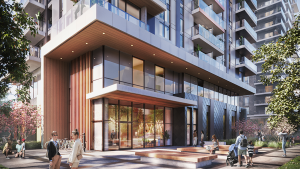After a shaky start a generation ago, Artificial Intelligence, or AI, is everywhere. Computers running AI algorithms have defeated world-class competitors in games of chess and Go.
The city of Vancouver police department was recently the first in Canada to use AI to predict the likelihood of break-ins across the city. It is AI that powers predictive maintenance for users of heavy equipment.
To write this column, I’m using a program that lets me dictate instead of type. It uses a form of AI to select the spellings it will use from the context of what I’m saying. Thus it distinguishes between two, to, or too.
In a panel that’s open beside the column I’m writing, another program is using AI to check my grammar, reminding me to use a comma after an introductory phrase.
The financial services industry is embracing AI and is taking the first steps to analyse markets using computer-driven algorithms. And Apple, Alphabet, Amazon, Facebook and Microsoft are all using AI to market and sell goods and services to us.
Now comes word that two outfits in Japan have developed new AI systems that attempt to reduce the risk of heatstroke for workers on construction job sites.
Fujitsu has developed a system that integrates AI into wristwatch sensors. The sensor monitors a worker’s heart rate, the number of steps he has taken and how much he has worked without resting, as well as the temperature and humidity.
The data are analysed by AI. When the risk of heatstroke increases, the worker’s wristwatch vibrates and a message is sent to the supervisor’s smartphone recommending that the worker rest and have a drink of water.
Of course, the AI system has to be "trained" before it can function. To that end, data were collected last summer from 27 men in their 20s, 30s and 40s, including their heart rate while working outdoors.
The resulting system is capable of assessing the risk of heatstroke through a four-stage scale.
Earlier this summer Fujitsu introduced the system on a trial basis when it was used to monitor the condition of security guards at its factory in Kawasaki. Satisfied with the result, the company plans to start selling the system to construction companies this week or next.
Also in Japan, Obayashi, a major construction company, has developed a system of its own that analyses data about heart rates from a sensor attached to a worker’s underwear.
Obayashi began introducing its AI technology at about 20 construction sites across the country last week.
Japan’s health, labour, and welfare ministry says that every year roughly 500 people die or become extremely sick as a result of heatstroke while at work. In 2010, a year with record-high average summer temperatures, the figure reached 656.
Kazuya Suzuki, a senior researcher at the Ohara Memorial Institute for Science of Labour, says that "some people may not realize they’re suffering heatstroke."
"We can prevent heatstroke by utilizing systems that properly monitor one’s physical condition."
So what is heatstroke?
For a start don’t be confused if people refer to sunstroke. Sunstroke and heatstroke are the same thing.
Whatever the name, it’s a type of severe heat illness that results in a highly elevated body temperature and is often accompanied by confusion. Other symptoms can include headache and dizziness. Its onset can be sudden or gradual. In extreme cases, there may be seizures or even kidney failure.
Preventive measures include drinking plenty of water and avoiding excessive heat. Treatment involves cooling the body as rapidly as possible, perhaps by spraying with cool water.
Supervisors on construction sites should know all this of course. So should all the older, more experienced hands. They’re the ones you may see on a hot August day take off their hardhats then give their heads a good soaking from a hose.
Sometimes the old admonition to "go soak your head" makes a lot of sense.
Korky Koroluk is an Ottawa-based freelance writer. Send comments to editor@dailycommercialnews.com.











Recent Comments
comments for this post are closed